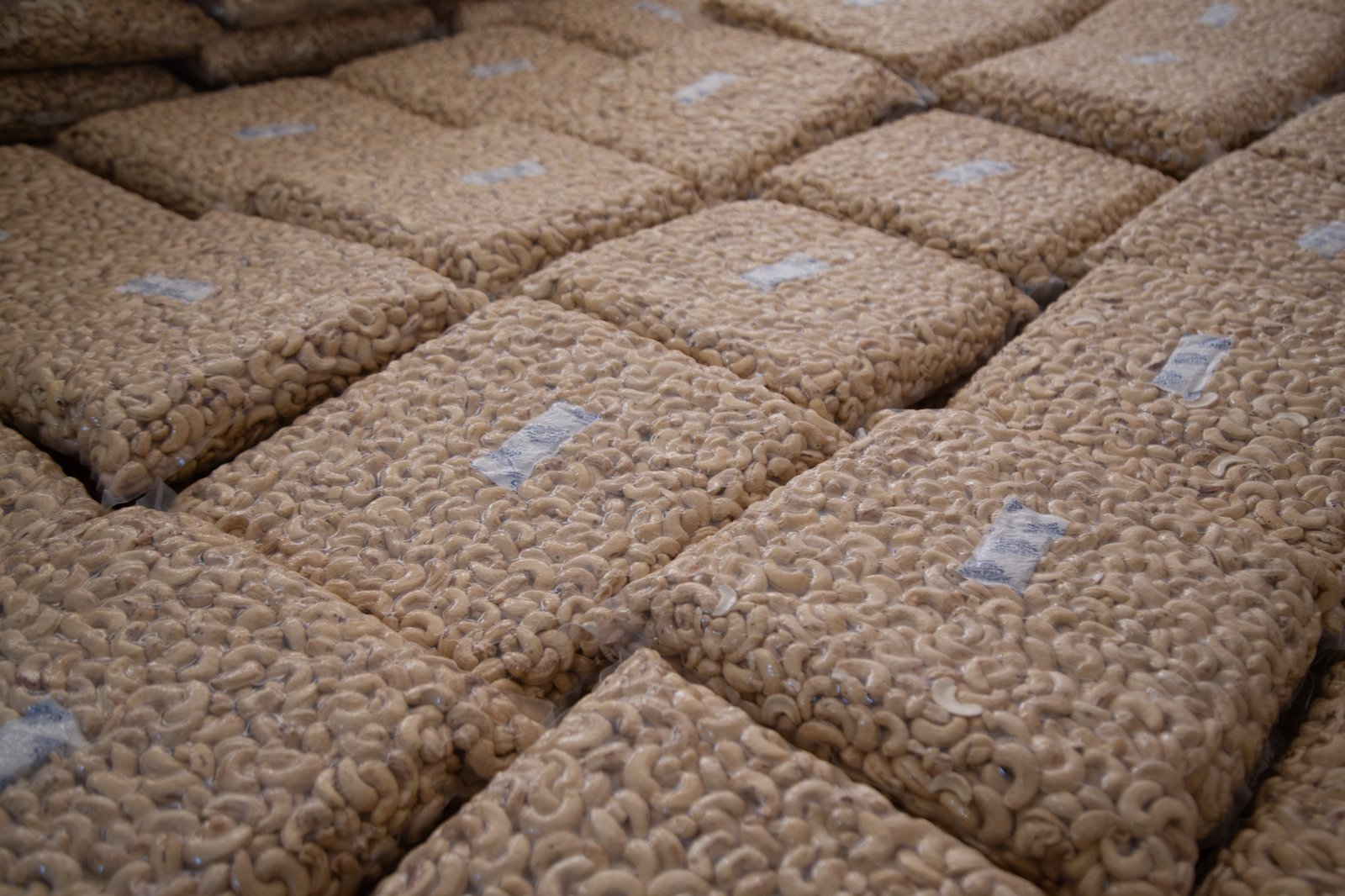February 25, 2025
Kingdom Hub Agro
M23 and Its Unique Characteristics

The Most Common Cashew Variety in Cambodia – M23 and Its Unique Characteristics
Cambodia is one of the world’s fastest-growing cashew-producing countries, recognized for its high-quality cashew kernels and an ideal climate for cultivation. Among the various cashew varieties grown, M23 stands out as the dominant choice, accounting for nearly 70% of total cashew production.
Farmers and exporters favor M23 cashews due to their high yield, large nut size, and adaptability to Cambodia’s climate. But what makes this variety so special?
What Makes the M23 Cashew Variety Unique?
M23 is renowned for its profitability, thanks to its large nuts, high kernel outturn ratio, and strong resistance to weather fluctuations. These characteristics make it highly desirable for both farmers and international cashew markets.
M23’s uniform kernel size and shape also make it an excellent choice for processing and export, as it is easier to grade and package for global markets.
Key Characteristics of M23 Cashew
Nut Size
110-130 nuts per kilogram (Large-sized kernels)
Yield Potential
1.5 – 2.6 tons per hectare
Kernel Outturn
28-33% (high recovery rate)
Weather Resistance
Strong resistance to heat and dry conditions.
Harvest Period
Flowers from mid-November to February with multiple cycles.

Growing Conditions & Requirements for M23 Cashew
M23 is well-suited to Cambodia’s tropical climate and diverse soil conditions. This variety thrives with minimal water requirements, making it an ideal crop for farmers with limited irrigation infrastructure.
Ideal Growing Conditions for M23 Cashew
- Climate: Best suited for 24°C to 28°C, thriving in a balance of dry and wet seasons.
- Soil Requirements: Grows in well-drained sandy or lateritic soils with a pH level of 5.5 to 6.5.
- Water Needs: Requires moderate rainfall (1,200 – 2,500mm per year) but is highly drought-resistant.
- Fertilization & Care: Farmers use organic compost and minimal chemical inputs to ensure high yield and soil health.
Why Does M23 Grow So Well in Cambodia?
Cambodia’s agricultural advantages make it the perfect location for M23 cashew cultivation. Here’s why:
1. Ideal Climate for Cashew Trees
Cashew trees require a long dry season to ensure proper flowering and nut development. Cambodia’s distinct wet and dry seasons create optimal conditions for high-yield production.
2. Fertile, Well-Drained Soil
M23 thrives in sandy, lateritic, and slightly acidic soils, which are abundant in Cambodia’s major cashew-growing regions:
- Kampong Thom
- Preah Vihear
- Ratanakiri
- Mondulkiri
3. Strong Market Demand & Export Potential
- M23 is highly sought after in Europe, the U.S., and Japan due to its large kernel size and premium quality.
- It meets organic and sustainable farming standards, making it a key player in Cambodia’s growing cashew export industry.
4. Adaptability & Low Input Requirements
Unlike other cash crops that require heavy irrigation and fertilizers, M23 is:
- Naturally drought-resistant
- Requires minimal fertilizers
- Cost-effective for farmers
This makes M23 an economical and sustainable choice for both local farmers and large-scale exporters.

